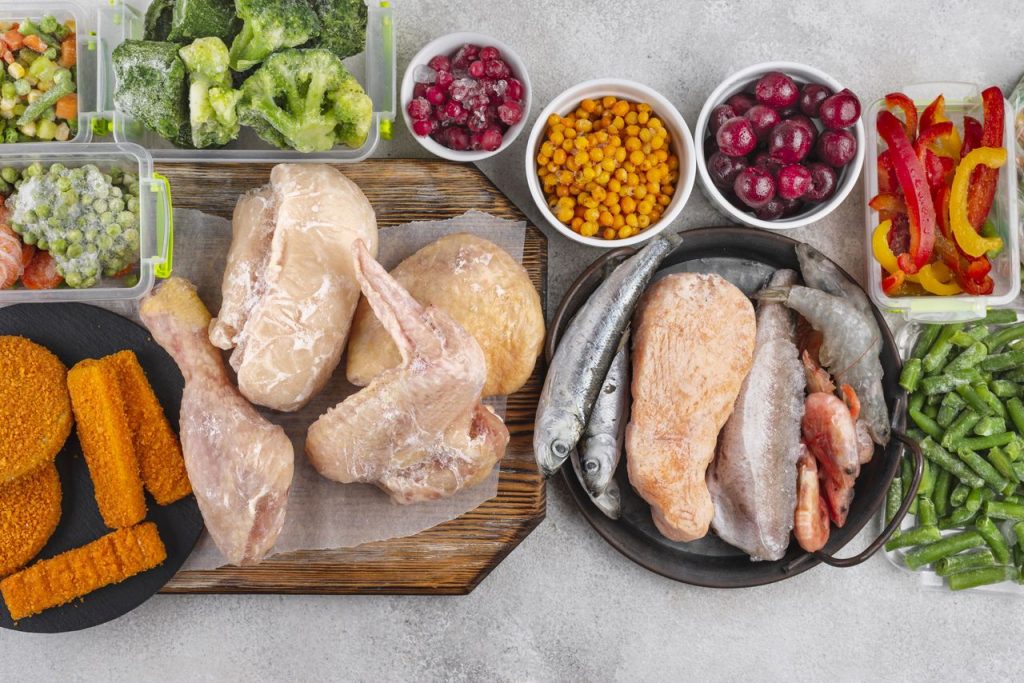Freezing food is in line with the zero waste philosophy. You can freeze not only produce but also leftovers from dinner. What can be safely stored in the freezer and for how long?
Meat should be frozen immediately after purchase since it loses its valuable vitamins during storage. Meat should be washed before freezing. Raw meat also has a limited time in which it can be safely consumed:
Fresh sliced sausage can also be frozen.
Fresh fish must be gutted before freezing. Frozen fish can be stored in the freezer for up to 4 months.
Bread can be stored in the freezer for a month or two. It is best to thaw it at room temperature.

All fruits are suitable for freezing. You can also freeze bananas, but they should be sliced. Place the fruits on a tray. Once they are frozen, you can put them in a bag or container. You can store such fruits in the freezer for up to six months.
Some vegetables should be blanched (poured over with boiling water) before freezing. This group includes: green beans, sugar snap peas, parsley, celery, broccoli, cauliflower and carrots.
Most cakes can be safely frozen. Cake can be stored for up to 3 months in the freezer.
Mushrooms with firm flesh such as bay bolete, buttermilk, chanterelle mushroom, chanterelle mushroom, chamois, and lentisk are best for freezing. Mushrooms should be divided into smaller pieces. Chanterelles and chanterelles should be boiled 10 minutes before freezing.
Raw shortcrust pastry can be frozen. After taking it out of the freezer there is no need to defrost it, just grate it onto the baking tray.
All one-pot meals can be frozen in containers or pouches. If you want, you can also freeze dumplings, only first you need to cook them in boiling water for about 2- 3 minutes, until they float. Then cool them on a tray, so that they don’t touch each other. When they have cooled, freeze them together with the tray. Once they are frozen, then they can be transferred to a box or bag.
The finished dishes can be stored in the freezer for up to 3 months.
1. Chill food before you put it in the refrigerator
Putting warm dishes in the freezer can spoil the appliance. Let foods cool and put them in a container or bag before putting them in the freezer. Divide food into smaller portions.
2. Never freeze what you have previously thawed
Freezing, thawing, and refreezing produce multiplies bacteria that are dangerous to your health. If a product is processed, it can be refrozen, such as making a sauce from thawed meat.
3. Only freeze in suitable containers
It is best to freeze in reusable string bags. It is advisable to choose bags of high quality. Food can also be stored in glass containers if they are suitable for this purpose.
Before freezing food, the air should be removed from it. It is important to remember that during freezing liquid food increases its volume.
>> See also: Fresh mushrooms. How to store them?
4. Divide meals into smaller portions
Before freezing food, you should divide it into smaller – single portions. This way you can always pull out and defrost just one portion.
5. Freezing does not kill bacteria
Freezing does not kill bacteria. If foods sit in the freezer for too long, eating them after thawing can result in poisoning.
6. Label frozen foods accurately
When you freeze meals, you should describe them accurately – the date and the name of the food. This way, you won’t have any doubts about what’s in it.
7. Don’t freeze stale food
Food should be frozen immediately after cooking and cooling. New frozen foods should be stacked in the back to start with the older ones.
8. Keep your freezer clean
If there is too much frost in the freezer, the refrigerator will freeze worse and use more electricity. So make sure the walls of the freezer are not frosted.
9. Do not open the freezer if there is a power failure
Do not open the freezer if there is a sudden power failure or the refrigerator breaks down. If the freezer is not opened, it should keep the temperature up to 36 hours.
You should not freeze products such as: